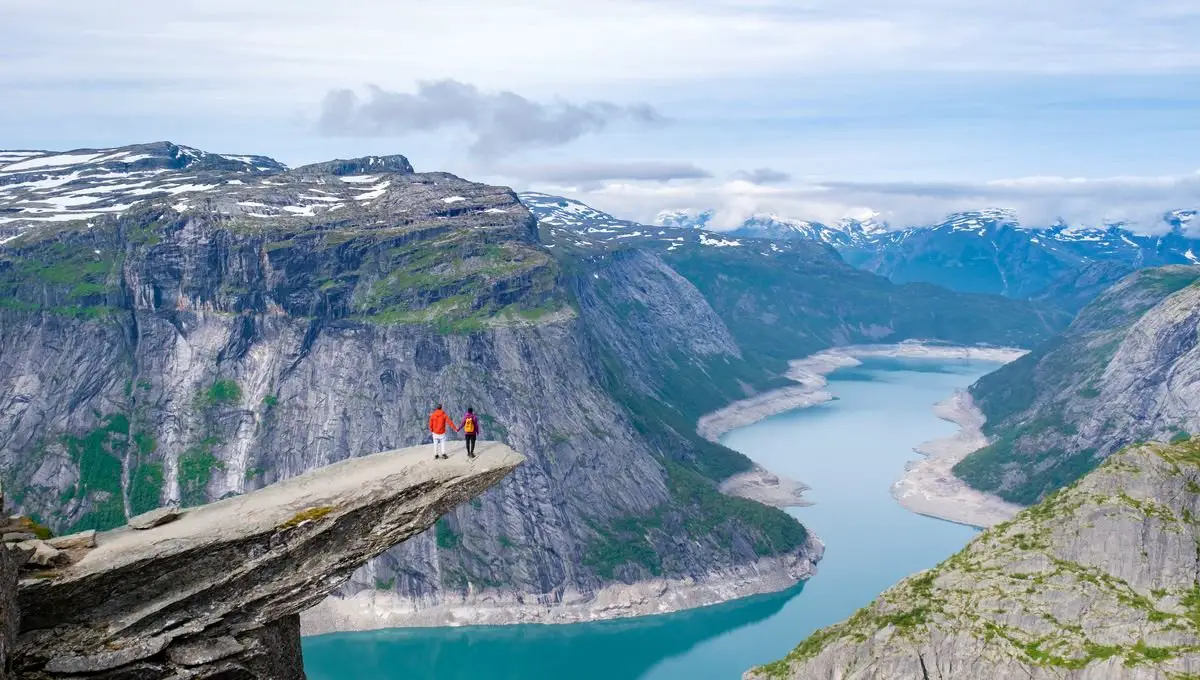What if there was a megatsunami and nobody noticed? It almost happened last year, when a rockslide occurred halfway up Greenland’s east coast. The wave produced was initially 200 meters (650 feet) high, yet they got very little coverage – we must confess, IFLScience missed it as well. In our defense, no one was hurt and it is only now that scientists have reported the most interesting part of the event; the creation of a second type of wave that kept the waters of a fjord oscillating for a week.
The tsunamis we are most familiar with are caused by volcanoes or undersea earthquakes. Tsunamis can also be caused by rocks falling into the ocean – most dramatically in the case of the impact that killed most dinosaurs, but usually caused by avalanches. This sort of tsunami is surprisingly common – one in 1958 triggered the highest waves ever recorded.
We seldom hear about events like this because they most often happen where ice is abundant, such as near the poles. Consequently, six years after a megatsunami 100 meters (330 feet) high devastated a small community in West Greenland, another one struck on the opposite coast. But when Angela Carrillo-Ponce of GFZ German Research Centre for Geoscience and colleagues examined the seismic data, they noticed something unusual.
A signal could be observed from the initial swift release of a great deal of energy, but it was accompanied by a second note, known as a very long-period (VLP) signal. This, the team found, was from a seiche – a standing wave that makes a body of water oscillate. You might be familiar with seiches from the astonishing discovery of a fossil bed created by one on the day the dinosaurs died or the home of the world’s rarest fish. You might also have made one in your bath as a child if you pushed the water around at a frequency that matched the resonance of the container, or produced one in physics class as your teacher demonstrated standing waves.
The one these researchers found is on a different scale, timewise, however. “The fact that the signal of a rockslide-triggered sloshing wave in a remote area of Greenland can be observed worldwide and for over a week is exciting, and as seismologists this signal was what mostly caught our attention,” Carrillo-Ponce said in a statement. “The analysis of the seismic signal can give us some answers regarding the processes involved and may even lead to improved monitoring of similar events in the future. If we had not studied this event seismically, then we would not have known about the seiche produced in the fjord system.”
Social media posts provided scientists with the first indication something big had happened on Greenland’s east coast, followed by reports of large waves from the (unoccupied at the time) Danish naval base on nearby Ella Island.

As this aerial photo shows, Dickson fjord is long but narrow, creating a resonating column for waves moving between the side walls.
Image Credit: TSR (2024) Carrillo-Ponce et al
The origins of the tsunami were traced to a side valley of Dickson Fjord, where satellite images revealed a here-yesterday-gone-today patch of rocks sitting 300-400 meters (984-1,312 feet) above the waterline. Researchers determined that a landslide swept a mix of glacier ice and rock into the water and around 1.6 kilometers (1 mile) along the valley until it reached the fjord proper.
No one witnessed what happened to the waters within the fjord. Seismic data suggests the initial tsunami was still around 60 meters (200 feet) high as it traveled most of the inlet’s length, but it faded quickly once it reached the open sea.
However, some of the energy bounced back and forth within the 20-kilometer (12-mile) long and 2-kilometer (1.2-mile) wide fjord, producing a seiche. The seiche was initially about 2.6 meters (9 feet) high, and bounced back and forth between the side walls with a period of a little less than two minutes, fading exceptionally slowly.
Icefalls have created VLP signals we have detected previously, but this one’s length startled researchers, particularly given the distance to stations that could detect it. “It is quite impressive to see that we could use good-quality data from stations located as far as Germany, Alaska and North America, and that those records were strong enough for at least one week,” Carrillo Ponce said.
The cause of the landslide is unknown. However, with ice holding many rocky but unstable parts of Greenland’s cliffs together, it is plausible that climate change is a contributor. Notably, most events like this have occurred in late summer.
A tsunami can be considered “mega” if it is more than 100 meters (330 feet) high at the source, even if it quickly falls below that level
The study is published open access in The Seismic Record.




